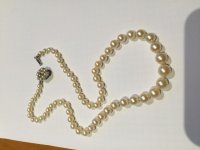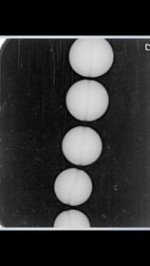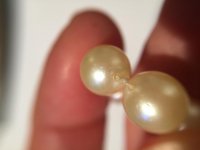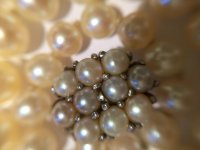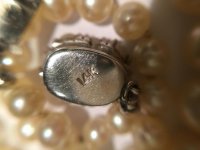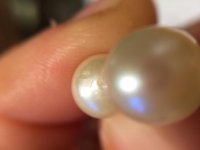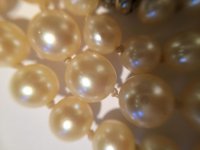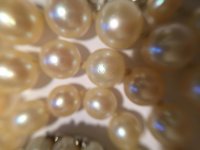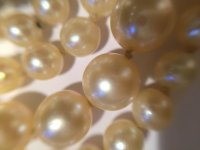Pearlescent
Member
- Joined
- Nov 10, 2016
- Messages
- 10
I inherited this strand and was told by several jewellers they might be natural, or a combination of natural and cultured pearls. I am wondering if any of you might have an opinion as to whether they are worth having analyzed by a gemologist? They are at least 70 years old, graduated (the largest measuring about 5mm). The clasp is only 14k gold, but I've been told it might be a later addition. They have some very small inclusions, look a bit whiter inside the drill holes, and one pearl shows some damage to the nacre. (See photos.) The x-ray is from my dentist. Any tips or opinions about them and whether they are worth researching would be greatly appreciated.

